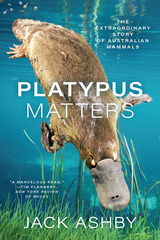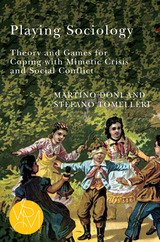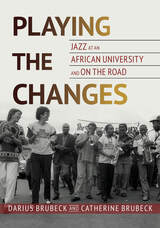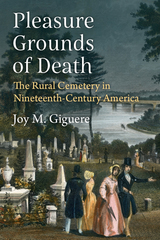102 books about Middle Ages and 5
start with P
102 books about Middle Ages and 5
102 books about Middle Ages
5 start with P start with P
5 start with P start with P
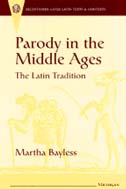
Parody in the Middle Ages
The Latin Tradition
Martha Bayless
University of Michigan Press, 1996
Parody in the Middle Ages: The Latin Tradition surveys and analyzes Latin parodies of texts and documents--Biblical parody, drinker's masses, bawdy litanies, lives of saints such as Nemo (Nobody) and Invicem (One-Another), and nonsense texts--in Western Europe from the early Middle Ages to the Renaissance. This book also sketches in the background to the canonical works of medieval literature: Chaucer's fabliaux, French comic tales such as the Roman de Renart, and medieval satire in general.
Bayless' study shows with great clarity that parody was a significant and vibrant literary form in the Middle Ages. In addition, her research sheds new light on clerical culture. The clerics who composed these parodies were far from meddling guardians of somber piety; rather, they appeared to see no contradiction between merriment and devotion. The wide dissemination and long life of these drolleries--some circulated for a thousand years--indicate a taste for clerical amusement that challenges conventional views of medieval solemnity.
Parody in the Middle Ages surveys in detail five of the most common traditions of parody. It provides a complete list of all known medieval Latin parodies, and also provides twenty complete texts in an appendix in the original Latin, with English translations. These texts have been collated from over a hundred manuscripts, many previously unknown. The study brings to light both a form and many texts that have remained obscure and inaccessible until now.
Parody in the Middle Ages appeals to the modern audience not only for its cultural value but also for the same reason the parodies appealed to the medieval audience: they are simply very funny. This welcome new volume will be of particular interest to students of medieval satire and literary culture, to medieval Latinists, and to those who want to explore the breadth of medieval culture.
Martha Bayless is Assistant Professor of English, University of Oregon.
Bayless' study shows with great clarity that parody was a significant and vibrant literary form in the Middle Ages. In addition, her research sheds new light on clerical culture. The clerics who composed these parodies were far from meddling guardians of somber piety; rather, they appeared to see no contradiction between merriment and devotion. The wide dissemination and long life of these drolleries--some circulated for a thousand years--indicate a taste for clerical amusement that challenges conventional views of medieval solemnity.
Parody in the Middle Ages surveys in detail five of the most common traditions of parody. It provides a complete list of all known medieval Latin parodies, and also provides twenty complete texts in an appendix in the original Latin, with English translations. These texts have been collated from over a hundred manuscripts, many previously unknown. The study brings to light both a form and many texts that have remained obscure and inaccessible until now.
Parody in the Middle Ages appeals to the modern audience not only for its cultural value but also for the same reason the parodies appealed to the medieval audience: they are simply very funny. This welcome new volume will be of particular interest to students of medieval satire and literary culture, to medieval Latinists, and to those who want to explore the breadth of medieval culture.
Martha Bayless is Assistant Professor of English, University of Oregon.
[more]
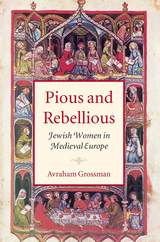
Pious and Rebellious
Jewish Women in Medieval Europe
Avraham Grossman
Brandeis University Press, 2004
This volume, an amazing act of historical recovery and reconstruction, offers a comprehensive examination of Jewish women in Europe during the High Middle Ages (1000–1300). Avraham Grossman covers multiple aspects of women’s lives in medieval Jewish society, including the image of woman, the structure of the family unit, age at marriage, position in family and society, her place in economic and religious life, her education, her role in family ceremonies, violence against women, and the position of the divorcée and the widow in society. Grossman shows that the High Middle Ages saw a distinct improvement in the status of Jewish women in Europe relative to their status during the Talmudic period and in Muslim countries. If, during the twelfth century, rabbis applauded women as "pious and pure" because of their major role in the martyrdom of the Crusades of 1096, then by the end of the thirteenth century, rabbis complained that women were becoming bold and rebellious. Two main factors fostered this change: first, the transformation of Jewish society from agrarian to "bourgeois," with women performing an increasingly important function in the family economy; and second, the openness toward women in Christian Europe, where women were not subjected to strict limitations based upon conceptions of modesty, as was the case in Muslim countries. The heart of Grossman’s book concerns the improvement of Jewish women’s lot, and the efforts of secular and religious authorities to impede their new-found status. Bringing together a variety of sources including halakhic literature, biblical and talmudic exegesis, ethical literature and philosophy, love songs, folklore and popular literature, gravestones, and drawings, Grossman’s book reconstructs the hitherto unrecorded lives of Jewish women during the Middle Ages.
[more]

Popular Culture in the Middle Ages
Smith
University of Wisconsin Press, 1986
The culture of the Middle Ages was as complex, if not as various, as our own, as the essays in this volume ably demonstrate. The essays cover a wide range of tipics, from church sculpture as "advertisement" to tricks and illusions as "homeeconomics."
[more]
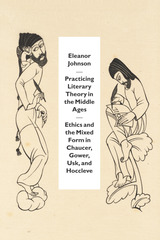
Practicing Literary Theory in the Middle Ages
Ethics and the Mixed Form in Chaucer, Gower, Usk, and Hoccleve
Eleanor Johnson
University of Chicago Press, 2013
Literary scholars often avoid the category of the aesthetic in discussions of ethics, believing that purely aesthetic judgments can vitiate analyses of a literary work’s sociopolitical heft and meaning. In Practicing Literary Theory in the Middle Ages, Eleanor Johnson reveals that aesthetics—the formal aspects of literary language that make it sense-perceptible—are indeed inextricable from ethics in the writing of medieval literature.
Johnson brings a keen formalist eye to bear on the prosimetric form: the mixing of prose with lyrical poetry. This form descends from the writings of the sixth-century Christian philosopher Boethius—specifically his famous prison text, Consolation of Philosophy—to the late medieval English tradition. Johnson argues that Boethius’s text had a broad influence not simply on the thematic and philosophical content of subsequent literary writing, but also on the specific aesthetic construction of several vernacular traditions. She demonstrates the underlying prosimetric structures in a variety of Middle English texts—including Chaucer’s Troilus and Criseyde and portions of the Canterbury Tales, Thomas Usk’s Testament of Love, John Gower’s Confessio amantis, and Thomas Hoccleve’s autobiographical poetry—and asks how particular formal choices work, how they resonate with medieval literary-theoretical ideas, and how particular poems and prose works mediate the tricky business of modeling ethical transformation for a readership.
[more]

Prayers that Cite Scripture
Biblical Quotation in Jewish Prayers from Antiquity through the Middle Ages
James L. Kugel
Harvard University Press, 2006
In the beginning, prayers were straightforward: people turned to God and asked for help. By the closing centuries of the biblical period, however, a change became observable. Prayers now began to include references to Scripture--allusions to biblical stories in which God had answered a prayer, or the evocation of specific biblical passages, or the recycling of biblical phrases in the creation of a new prayer. This process, the "Scripturalization of prayer," grew in intensity and refinement as Judaism moved from the biblical period to early post-biblical times. It is attested throughout the prayers found in the biblical apocrypha and pseudepigrapha, the Dead Sea Scrolls, and early piyyut, and it continued apace in the liturgical compositions of the Geonic period and still later times. This collection of essays seeks to chart the main lines of the Scripturalization of prayer over this entire period.
[more]
READERS
Browse our collection.
PUBLISHERS
See BiblioVault's publisher services.
STUDENT SERVICES
Files for college accessibility offices.
UChicago Accessibility Resources
home | accessibility | search | about | contact us
BiblioVault ® 2001 - 2024
The University of Chicago Press


